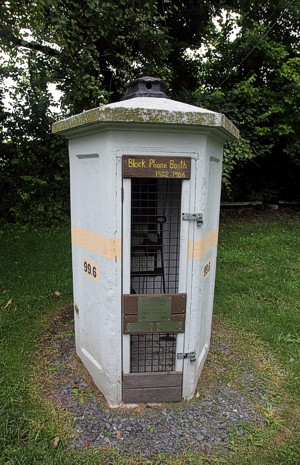 The former Ironton Railroad has been transformed into a multi-use, safe, historic, year-round recreational resource for local residents and visitors.
The former Ironton Railroad has been transformed into a multi-use, safe, historic, year-round recreational resource for local residents and visitors.
The Ironton Rail-Trail (IRT) provides a link between the local communities of Whitehall Township, Borough of Coplay, and North Whitehall Township and some of their recreational area in addition to serving as a spur to the Delaware and Lehigh National Heritage Corridor.
The Ironton Rail Trail right-of-way was purchased in 1996 from Conrail for the purpose of maintaining it's historical significance as well as to provide an open space greenway for local area citizenry & visitors to use and enjoy.
The 9.2 mile IRT follows the Coplay Creek in a south eastward direction from North Whitehall through the 110 acre natural Whitehall Parkway to where the creek flows under SR 145.
Here the IRT turns east toward the historic Saylor Cement Kilns and then south paralleling the Lehigh River and the D & L National Heritage Trail.
The IRT then turns in a northwesterly direction where it again follows Coplay Creek under SR 145 to form a unique 5.2 mile loop.
The 10' wide, flat ADA compliant grade of the IRT, with many easy access points, is a 9.2 mile paved trail from North Whitehall, through the Parkway, to the loop of the IRT. This easily accommodates trail users of all ages and physical abilities. A trail head with parking and a pavilion are located at 3256 Levans Rd. North Whitehall Township and 3853 Chestnut St. Whitehall Township. Parking is also available at Portland and Quarry St, North Whitehall and 245 N. 2nd St, Saylor Park, Coplay Borough, besides street parking near trail crossings.
Please enjoy the IRT and all it's activities and amenities and take note that much of the maintenance work along the trail is accomplished by volunteers, organizatons such as the Boy Scouts, Girl Scouts, Lions and Rotary Clubs, Garden Clubs, local church groups and the IRT Commissioners.
To learn more about the IRT and it's more than 23 historical sights please join us on one of the two Historical Walks we offer each year in the Spring and in the Fall.
All organized events on the IRT require an application and applicable permits 3 months prior to the event. More than $100,000 is raised every year by many Charity events conducting Run/Walks on the IRT - 5K, 10K and Half Marathons.
Want to help keep this recreational resource going?
Please consider volunteering some of your time and talent to the IRT.
Call Whitehall Township Recreation office at 610-437-5524 ext.1135 or Email rail.trail@yahoo.com
Interested in dedicating a memorial tree?
The IRT offers memorial trees that are designed to aid in preserving fond memories of past family and friends, honor special individuals or groups, and enhance the IRT's public green space. If you are interested, please fill out a Memorial Tree Application to be reviewed.
 These turn-of-the-last-century, 3,000-pound hexagonal structures were, at the time, considered as state-of-the-art, heralding the railroad industry's transition from telegraph to telephone communications.
These turn-of-the-last-century, 3,000-pound hexagonal structures were, at the time, considered as state-of-the-art, heralding the railroad industry's transition from telegraph to telephone communications.
The thousands of concrete phone booths were once so prevalent they doubled as track mile markers. This rescued concrete phone booth, also called a Block Phone because it served to communicate within a railroad area called a Block, can be seen along the Ironton Rail Trail. It is painted with its mile marker "99.6."
This Block Phone was located 99.6 miles from Lehigh Valley Railroad's Liberty Street Ferry Terminal in New York City. The LVRR started putting them in around 1903 and by 1910, they began dispatching by telephone. The Block Phones eliminated the need for a telegrapher. A train could stop, call the tower man on each end and get orders to go out. They didn't need to have a telegrapher with them to attach wires and a telegraph.
Offering the advantages of safety and efficiency, the phone booths began being churned out by the railroads using a mass production technique that favored a hexagonal shape, probably so that the forms could be assembled like a beehive. The poured booth included five walls, leaving room for a door, and a thick floor to serve as a foundation.
